Normally it’s very difficult to find Barn Owls hunting in daylight but an extremely cold winter a few years ago caused some of them around here to continue hunting into mid-morning. They were looking for voles in the wetlands and it was fascinating to watch and photograph them as they effortlessly cruised over the phragmites and grasses, occasionally turning abruptly and diving for prey.
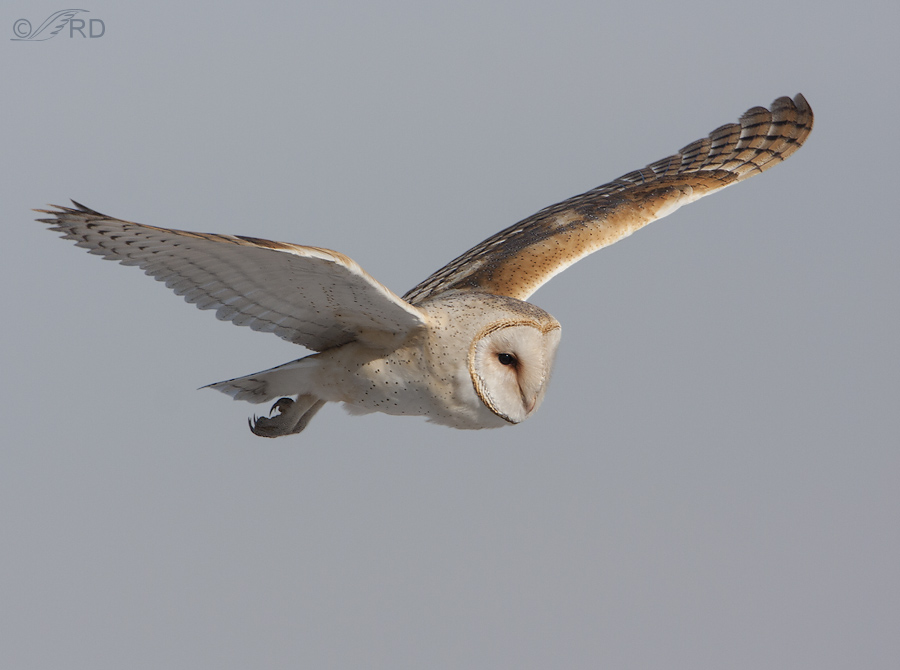
1/2000, f/8, ISO 400, 500 f/4, 1.4 tc, natural light, not baited, set up or called in
It was very cold and frosty with lots of moisture in the air which turned the sky background a color that appeals to me.
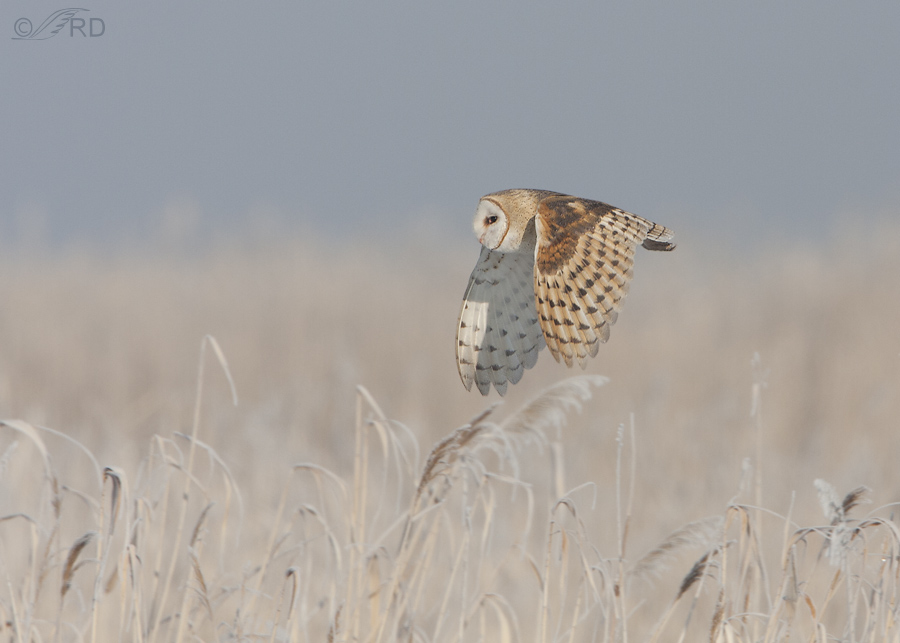
1/2000, f/8, ISO 400, 500 f/4, 1.4 tc, natural light, not baited, set up or called in
Sometimes they were low enough to get the Phragmites in the setting. Phragmites is a scourge to wetland managers but I’ve always liked it for backgrounds.
When the owls would fly west I would often get light on the entire bird.
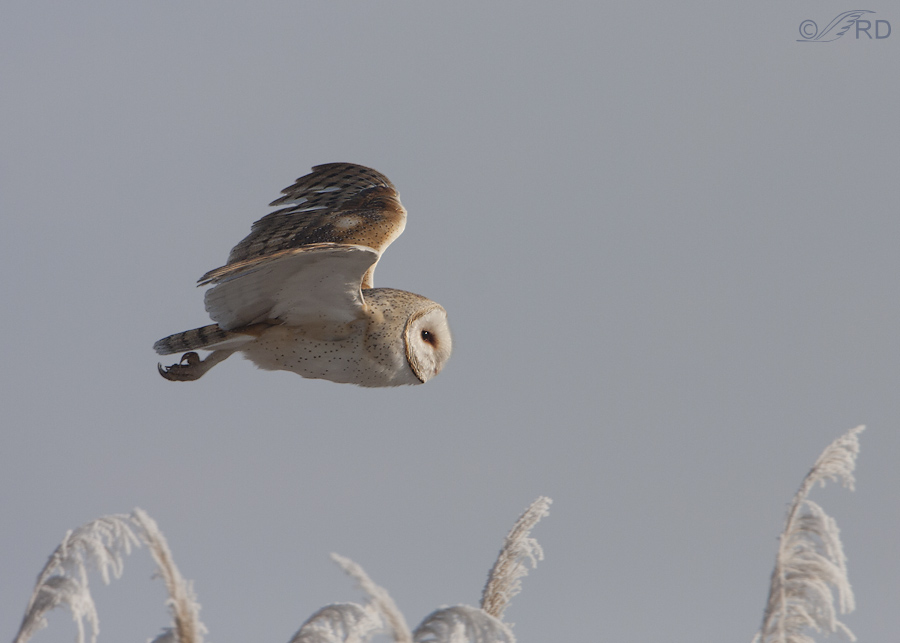
1/2000, f/8, ISO 400, 500 f/4, 1.4 tc, natural light, not baited, set up or called in
But when they flew east they were sidelit. I like both effects.
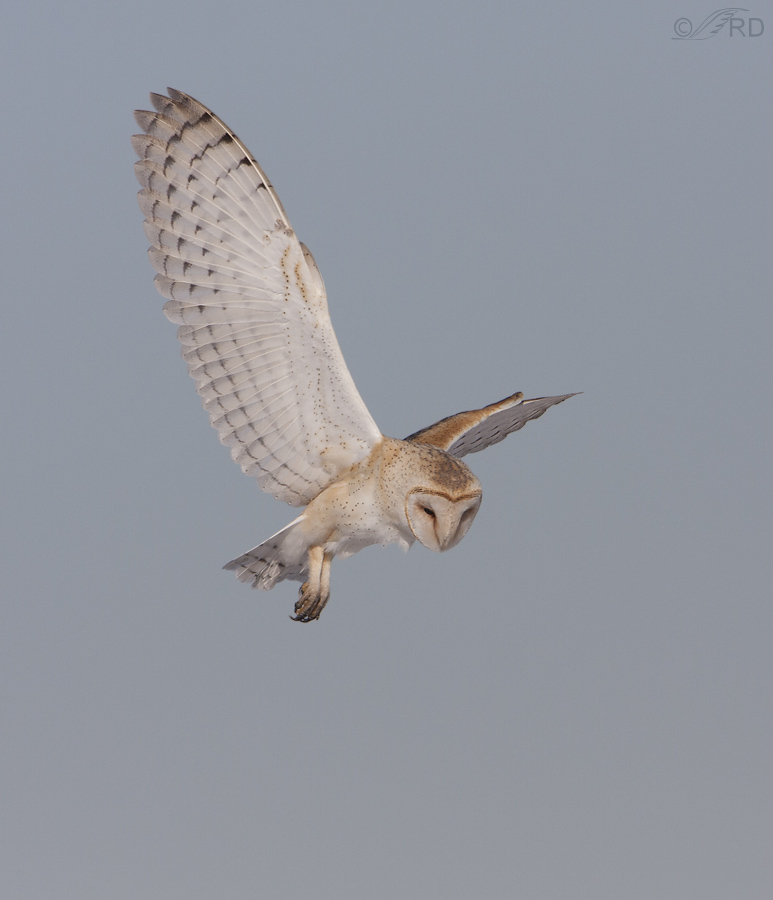
1/3200, f/8, ISO 400, 500 f/4, 1.4 tc, natural light, not baited, set up or called in
Partly because of their deeply set eyes it’s a challenge to get catch lights in Barn Owls. But here the bird was hovering over prey and looking down at it so because of the behavior you wouldn’t expect to get light in the eye. I’m ok with that.
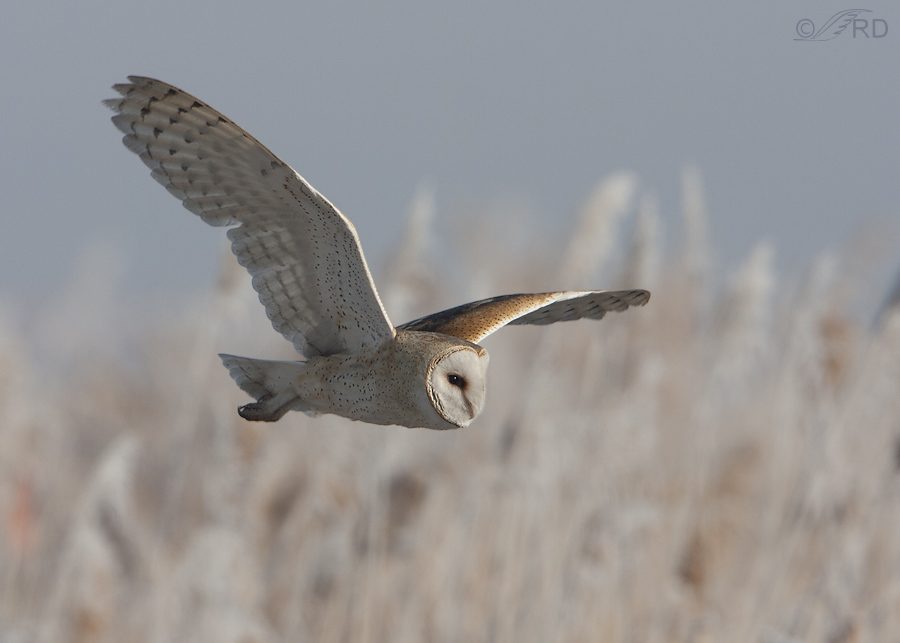
1/2000, f/8, ISO 400, 500 f/4, 1.4 tc, natural light, not baited, set up or called in
That time of morning the Phragmites was nearly always covered with hoar frost and combined with the dark seed heads it often provided a slightly blotchy background but I enjoy the natural feel of it.
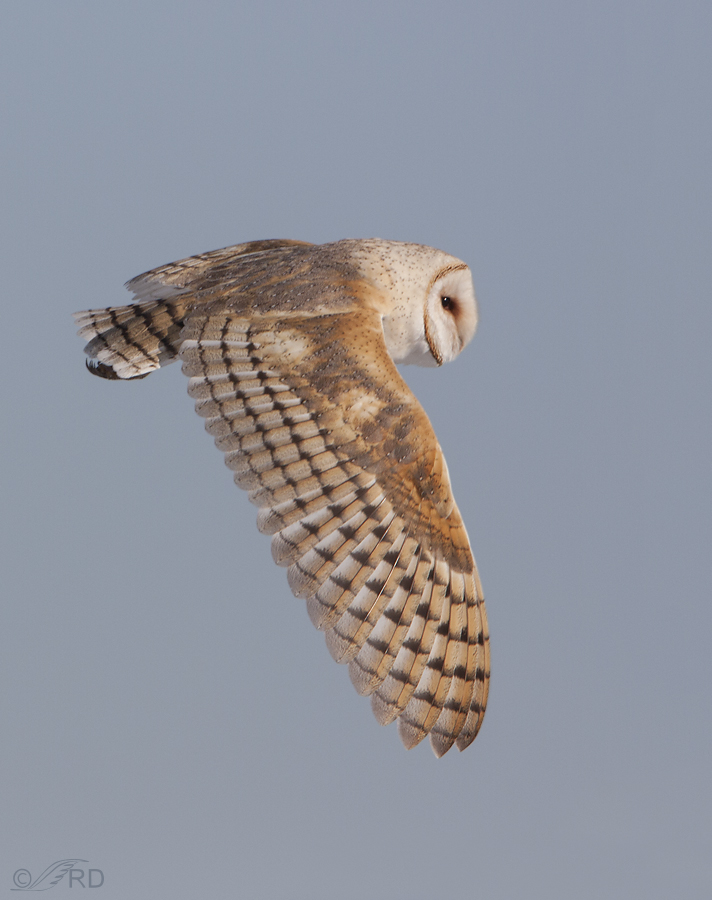
1/2000, f/8, ISO 400, 500 f/4, 1.4 tc, natural light, not baited, set up or called in
This owl was slightly past me when I got the shot but for me the light on the lowered wing more than made up for it.
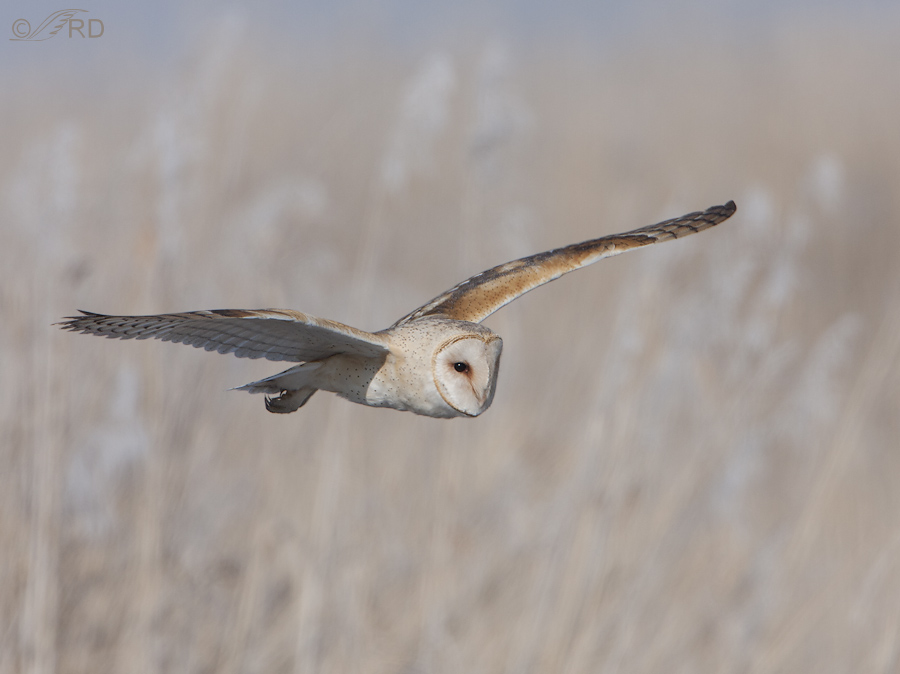
1/2000, f/8, ISO 400, 500 f/4, 1.4 tc, natural light, not baited, set up or called in
In this image most of the dark seed heads were covered with frost which made for less blotchiness in the background.
1/2500, f/8, ISO 400, 500 f/4, 1.4 tc, natural light, not baited, set up or called in
This is one of my favorite Barn Owl images, partly because of the head-on approach from the bird – an especially difficult shot to get of an owl without baiting it in.

1/250, f/8, ISO 500, 500 f/4, 1.4 tc, natural light, not baited, set up or called in
It was a tough winter that gave me the opportunity with these owls. For their sake I hope it doesn’t happen again soon – many of them didn’t make it till spring. I’ve included this shot (taken the following winter, which was less frigid than the year before) to give you a feeling what these conditions are like for these owls. This image was taken in the morning before the fog cleared and after the bird had been hunting all night.
Ron


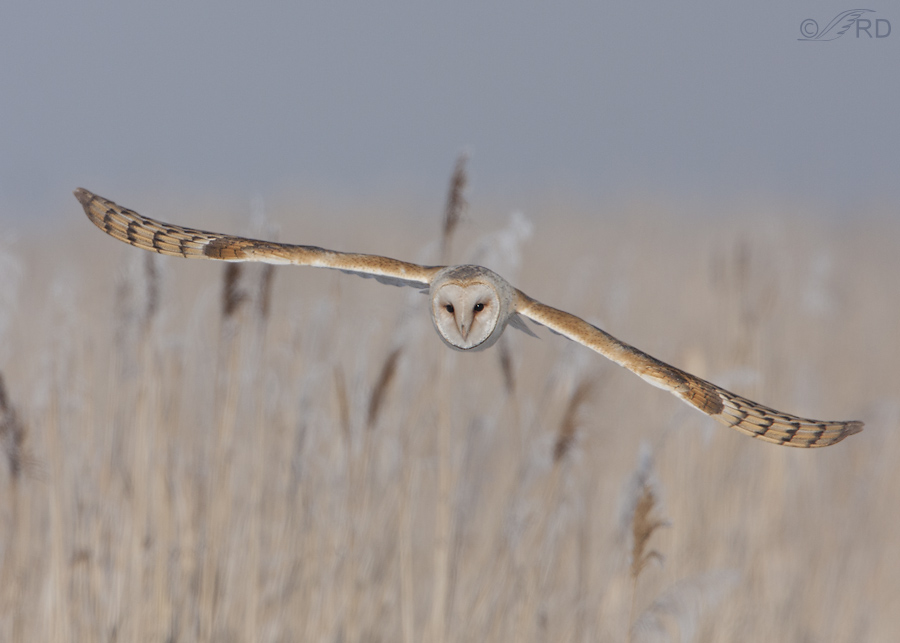
Wonderful photography, Ron. I especially like the wing detail in flight. I am a wildlife docent at the Yolo Bypass Wetlands in Yolo County, California and give brief presentations on owls and their pellets to elementary school children. These photos have given me a better mental impression of the barn owl in flight and will certainly add to my presentations in the future. Thank you for your efforts.
Thanks very much, David. I love getting feedback that my images have helped in any educational way.
David, I replied to the email you sent me but got this automatic reply – “now allow incoming messages only from senders I have approved beforehand”. You might want to check your junk folder for my reply.
Very nice sequence Ron, the eye contact and flight poses are very cool, excellent photography.
Stunning flight images Ron and I simply adore the frosted face image. Amazing photography.
I’m a bird lover, owl lover, mature grass lover, and frost lover, so these appeal ever so much to me! Gorgeous!
One of my attempts to get my son interested in going looking for birds with me was an attempt to get him interested in owls via the Guardians of Ga’Hoole books. Oops! He became fixated on barn owls (the primary hero of the series, and also the primary villain, are barn owls) – which are rare around home.
Whatever works Katie, to get our kids involved with and appreciating nature. His fixation on Barn Owls may just blossom.
As always your photos are amazing. I am a fan of the colder months – but your last photo in this series made me rethink my position. Frivolity aside – thankyou. I have rarely seen owls in their natural habitat and it was a huge thrill each time. Your photos recreated that thrill for me.
The cold was really awful that winter Elephant’s Child. I had to photograph these birds with a tripod, standing outside (rather than from my truck) and I’m amazed I didn’t lose some fingers, toes and ears to frostbite during those few weeks of shooting owls. The experience really increased my empathy for birds that hang around here all winter.
Wow. Ron, I don’t just SEE these images, I FEEL them. Thank you!
Thanks very much Dick.
These are amazing photos – your subjects are stunningly beautiful. It makes me terribly sad that not all of them make it through winter, and that their barns are being torn down. They are the most splendid creatures. Harumph.
Nicole – yeah, the loss of so many old buildings and barns isn’t helpful at all to Barn Owls. Really too bad…
I love the head on shot and the one with the frost. Mother nature can be a harsh mistress, and combined with the hard time they get from humans, it is surprising that we are lucky enough to see these beautiful creatures at all. Thank you for this documentation.
You’re right Tana, Barn Owls are having a difficult time. I know of another old barn that harbored these birds that was torn down recently. The owls are no longer around as far as I can tell.
Beautiful shots Ron, I especially like the flight shot that shows the wing detail. I’ve always thought they’re one of the prettiest birds.
Thanks Jeremy. I like that wing detail too, especially in that light.